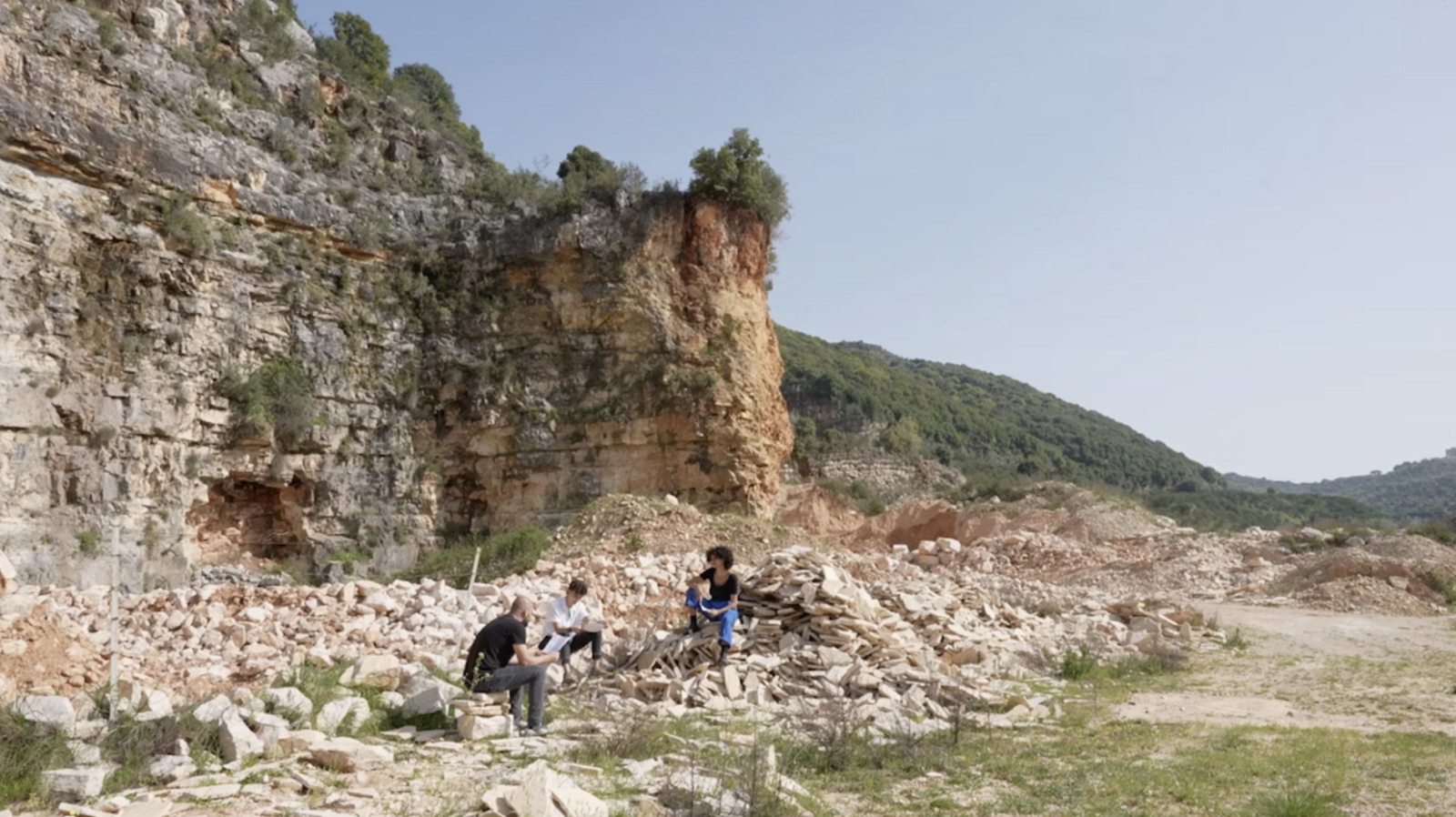Witness Harvest #3: Who Is Afraid Of Ideology?

Marwa Arsanois, Who Is Afraid of Ideology? Part 4: Reverse Shot (2022)
During the first year of the Curatorial Programme Lumbung Practice and Sandberg Instituut's temporary master programme Lumbung Practice, Ilia Pellapaisiotou (intern Curatorial Programme) writes monthly Witness Harvests on the public events and the less visible happenings. Harvest means the documentation of meetings, which is prepared by harvesters as overviews, texts, sketches or drawings and enables the traceability of the meeting. The harvesters listen and reflect. In exaggerated, humorous, poetic or academic form, they document the process from their individual perspective and by means of their own artistic practices.
The themes of land, its usership and ownership are central to both de Appel and the Lumbung Practice. In the context of late capitalism, land has been privatized and transformed into a financial asset. But what if land, as a living entity, inherently rejects its ownership as property? This is one of the questions Lebanese filmmaker Marwa Arsanios addresses in the fourth part of the collaborative film project Who is Afraid of Ideology?. The films are in four parts, part one and part four were screened at Kriterion on the 12th of January 2025; an event that was organised by de Appel as part of its ongoing exhibition My Garden’s Boundaries Are the Horizon. More specifically, part four, titled Reverse Shot, attempts to shift the status of a private land in North Lebanon to the traditional model defined as masha’a; an Arabic term that refers to agricultural common lands that are used collectively for agricultural purposes. In that way, the land’s usership is favoured over its ownership.
Reverse Shot weaves history with political action as it traces back a time when people lived off the land. In the film Arsanios visits Ottoman archives to explore the historical practices around land designation and seeks to redesignate the land so as to be used solely for agricultural purposes. Arsanios refers to this shift, as stated in a conversation with the Lumbung Participants, as a ‘politics of return’ rather than a politics of the common as something state-owned. This anti-capitalist, communal approach to land usership could be understood as one of the multiple ways of interpreting the title Reverse Shot, as the film inverts dominant ideologies around land ownership and usage.
In film terminology, reverse shot typically refers to the shot that captures a view from the opposite perspective of the previous shot, suggesting a back-and-forth sequence between two characters. The technique of the reverse shot has also filmically been heralded as “a truth with two faces” thanks to the globally acclaimed filmmaker Jean Luc Godard’s use of it in his film Ici et Ailleurs (Here and Elsewhere, 1976), which captures the revolutionary cause of Palestine.
In this case, it could be interpreted that the second character of Reverse Shot is the land itself, drifting away from a uniquely human-centred perspective. Stylistically, this is illustrated through the filming from higher or lower vantage points than the typical human eye-level, giving the land a more prominent character in the film. Finally, The film encourages the viewer to become an active character of the film and critically reflect on the practice of the privatization of land, of the feasibility of practicing a masha’a in modern day late capitalism, and the complexities that arise with that.
However, the film’s significance lies in its active participation in intervening in the system that it critiques. Away from using art as a symbolic representation of what ought to be done, Arsanios employs art as an active, political intervention, by investigating the feasibility of the land’s redesignation. By doing so, her research itself becomes the artwork; both an aesthetic practice and a political experiment.